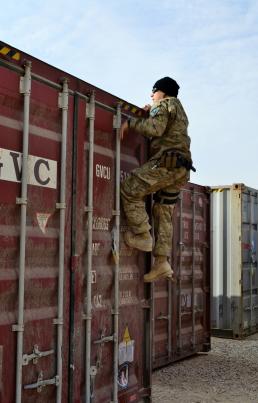 |
 |
||
|
Menu HomeAfghan ReportDaily ReadKabul NEOMapsGlossarySite MapAdsThis website is an Amazon Associate and earns money for qualifying purchases.
(SidebarLeftAds) |
Coast Guard RAID TeamMany are surprised to learn that the United States Navy provided a lot of service members to the Afghan War. One of the biggest contributors from the U.S. Navy was the Navy SEALs that worked in conjunction with other U.S. special operations forces. The Navy also had a number of individuals working at ISAF headquarters in Kabul and throughout the regional commands. The Navy even provided advisors to some of the Afghan National Civil Order Police (ANCOP) kandaks throughout the country - how they were chosen for the task of advising police SWAT units is beyond comprehension. Even more surprising, however, is the fact that the U.S. Coast Guard deployed small RAID Teams to the Afghan conflict for many years. One can only imagine, with the name of "Coast Guard RAID Team", of small Coast Guard crews armed to the teeth wearing body armor plying the Kabul River in their 25-foot Defender Class Boats in support of Special Operations units of the SOJTF-A conducting night raids. This class boat has a reinforced bow, full shock mitigating seating, large cabin and LED navigation lights. It will speed along at a fast rate of speed with its 450 HP engine . (1). But wait . . . what exactly does "RAID" stand for? The acronym is the short form for "Redeployment Assistance and Inspection Detachment". Oh . . . Since 2003 over two hundred Coast Guard personnel have deployed to Afghanistan as members of these RAID Teams where they inspected cargo shipping containers to make sure the containers are serviceable and seaworthy and to ensure that all requirements and regulations are followed. These inspections helped to eliminate delays in shipping of material and equipment back to the states - an important part of the retrograde operation. The last RAID Team redeployed from Afghanistan in the spring of 2015.
Training. RAID Team members received specialized training prior to deployment to Afghanistan to include . . . training on DOD shipping procedures, chemical, biological, radiological, nuclear explosive equipment training, combat first aid, army customs certification, advanced weapons training, and more. (2).
|
||
Books about AfghanistanAll external sites open up in a new window. |
|||

